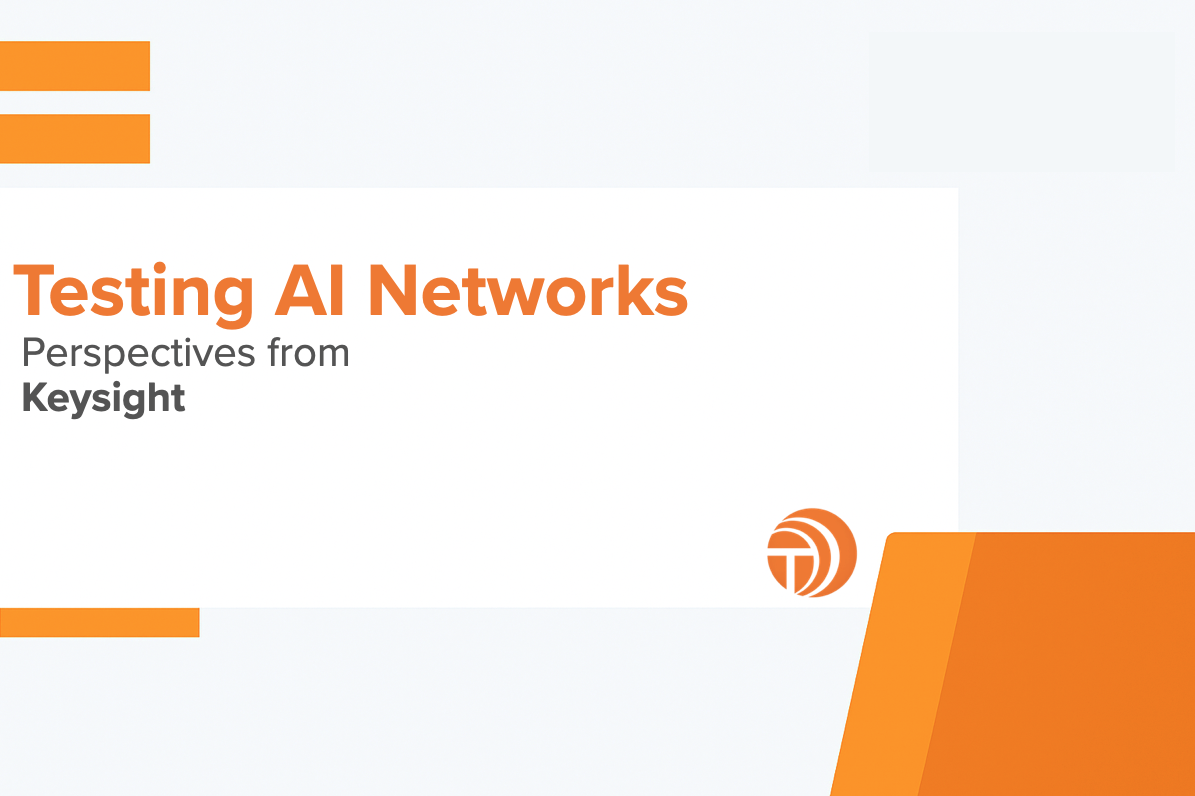The rise of large language models (LLMs) is reshaping data-center networks, demanding precise timing, lossless transfer, and uncompromising security. Simply deploying thousands of GPUs to test network performance isn’t practical or economical; specialized testing solutions are needed to emulate realistic conditions effectively.
The Tolly Group discussed these issues with Avik Bhattacharya, Senior Product Manager for network-infrastructure test products at Keysight Technologies, gaining deeper understanding of modern AI networking challenges.
Why Traditional Testing Falls Short for AI Networks
AI workloads generate distinct and demanding network traffic patterns. Avik emphasizes the unique challenges:
Elephant Flows and Micro-bursts: AI training often involves massive data transfers with low entropy, leading to unpredictable traffic bursts that traditional testing doesn't adequately replicate.
Multi-tenant Complexity: Concurrent training jobs contend for shared network infrastructure, complicating traffic management and performance optimization.
Fault Sensitivity: AI training processes are synchronous; a single GPU, waiting for a network bottleneck can stall the entire training process, making precision testing critical.
These dynamics require a lossless network fabric and advanced congestion management mechanisms such as Priority Flow Control (PFC) and Data Center Quantized Congestion Notification (DCQCN) — mechanisms that prevents packet loss by temporarily throttling traffic. Balancing congestion management to avoid packet loss without introducing latency is a delicate and critical task.
Beyond performance challenges, AI’s integration into critical business and operational systems introduces new vulnerabilities. Avik points to the increasing risk of prompt injection attacks, where malicious inputs manipulate AI models to leak sensitive data or bypass security controls. This underscores the necessity of incorporating rigorous security testing into AI network validation strategies.
Addressing AI’s Bottlenecks: Keysight’s Strategic Approach
AI network environments differ significantly from traditional network scenarios, necessitating specialized testing approaches. Avik underscores that AI networks feature multiple operational phases, each with distinct requirements. For example, training phases characterized by massive east-west GPU traffic exchanges demand rigorous testing of lossless transport protocols, such as RoCE-v2. These protocols are highly susceptible to network disruptions; a single dropped or delayed packet can trigger costly retransmissions, significantly prolonging the training cycles.
Network Interface Cards (NICs) represent another critical innovation frontier in this ecosystem. Modern NICs must evolve beyond simple data transfer to become intelligent congestion management systems. They need sophisticated algorithms to handle traffic bursts proactively, making optimal use of available bandwidth while preventing the cascading failures that can ripple through entire GPU clusters. This intelligence at the NIC level is becoming as important as the network fabric itself.
Keysight addresses these bottlenecks through targeted, scenario-specific validation approaches. Rather than simply generating generic traffic loads, Keysight replicates real-world conditions by simulating realistic impairments, including micro-bursts, latency fluctuations, and packet loss events. This methodical approach helps engineers pinpoint exactly how network infrastructure and NICs manage congestion, effectively maintaining throughput without sacrificing performance.
Moreover, Keysight emphasizes the necessity of precise congestion management. By systematically benchmarking and fine-tuning ECN thresholds, PFC configurations, and NIC firmware responsiveness, Keysight helps network operators discover and apply optimal operating parameters. These measures ensure the robust handling of AI-specific traffic, significantly reducing network bottlenecks and improving overall training and inference performance.
Keysight’s Robust Testing Suite for AI Workloads
Keysight provides a comprehensive suite of testing tools tailored specifically for AI network environments:
Collective Benchmark Application: This tool benchmarks distributed communication algorithms used in GPU clusters, validating that networks consistently deliver optimal bandwidth across common AI data-exchange patterns.
AI Workload Emulation: Keysight’s emulation software replicates real-world AI training workloads over thousands of iterations, enabling precise evaluation of different partitioning schemes and network topologies without the expense of actual GPU clusters.
Inference and Security Validation: Unlike training workloads, inference processes prioritize consistent low-latency responses. Keysight’s CyPerf solutions test network performance and security by generating realistic inference traffic and simulating cyber threats, such as prompt injection attacks targeting LLMs. This ensures AI applications maintain high security standards without compromising latency.
Keysight’s Future-Proof Roadmap
Keysight continues to innovate alongside the rapidly evolving AI landscape, actively participating in discussions with industry groups such as the Ultra Ethernet Consortium. Upcoming solutions will support emerging standards and next-generation transports tailored for AI workloads, ensuring their testing tools remain ahead of industry developments.
Implications for Network Architects and Operators
Network professionals must reconsider their testing strategies for AI-driven infrastructures. Accurate replication of AI-specific traffic patterns, robust congestion control validation, and rigorous security testing are essential to maintaining network reliability and performance. As AI workloads become mission-critical for business operations, investing in specialized network validation isn't just about preventing downtime: it’s about maintaining competitive advantage in an AI-driven economy.
Key Takeaways
Traditional network tests inadequately capture the unique demands of AI workloads.
Keysight’s specialized tools precisely replicate AI traffic and congestion scenarios.
Security testing for AI-driven applications is essential to protect against evolving cyber threats.
Comprehensive AI network validation delivers substantial operational and competitive benefits.
Learn More
Explore Keysight’s advanced AI testing solutions by visiting Keysight AI (KAI) for further resources and detailed product information: https://www.keysight.com/us/en/cmp/kai
